This professional bakery-style Swiss Meringue Buttercream recipe is made with egg whites, granulated sugar, butter, and vanilla. It's a foolproof recipe that's not too sweet, ready in under 30 minutes, and perfect for piping.

I'm a frosting girl through and through. In my opinion, you can never have too many frosting recipes! Just thinking about my Whipped Chocolate Ganache Frosting or Classic Cream Cheese Frosting makes me weak in the knees. Yum!
And, let's not forget about classic American buttercream recipes like Fluffy Vanilla Frosting and Extra Rich Milk Chocolate Frosting that are made with confectioners' sugar and butter. Nothing is as deliciously sweet as American buttercream frosting!
Why you'll love this recipe
However, when I'm in the mood for bakery-style, silky smooth frosting, my go-to is this Swiss Meringue Buttercream Recipe.
You make it by heating egg whites and granulated sugar to create a super stable meringue with a creamy, not-too-sweet flavor. I use this frosting all the time—it’s professional quality and easy to whip up in your own kitchen!
Trust me when I say you are going to feel like a pro once you make this tried and true buttercream recipe.
I'm sharing all my expert tips and tricks, and a step-by-step tutorial so you can master the art of making Swiss meringue buttercream.
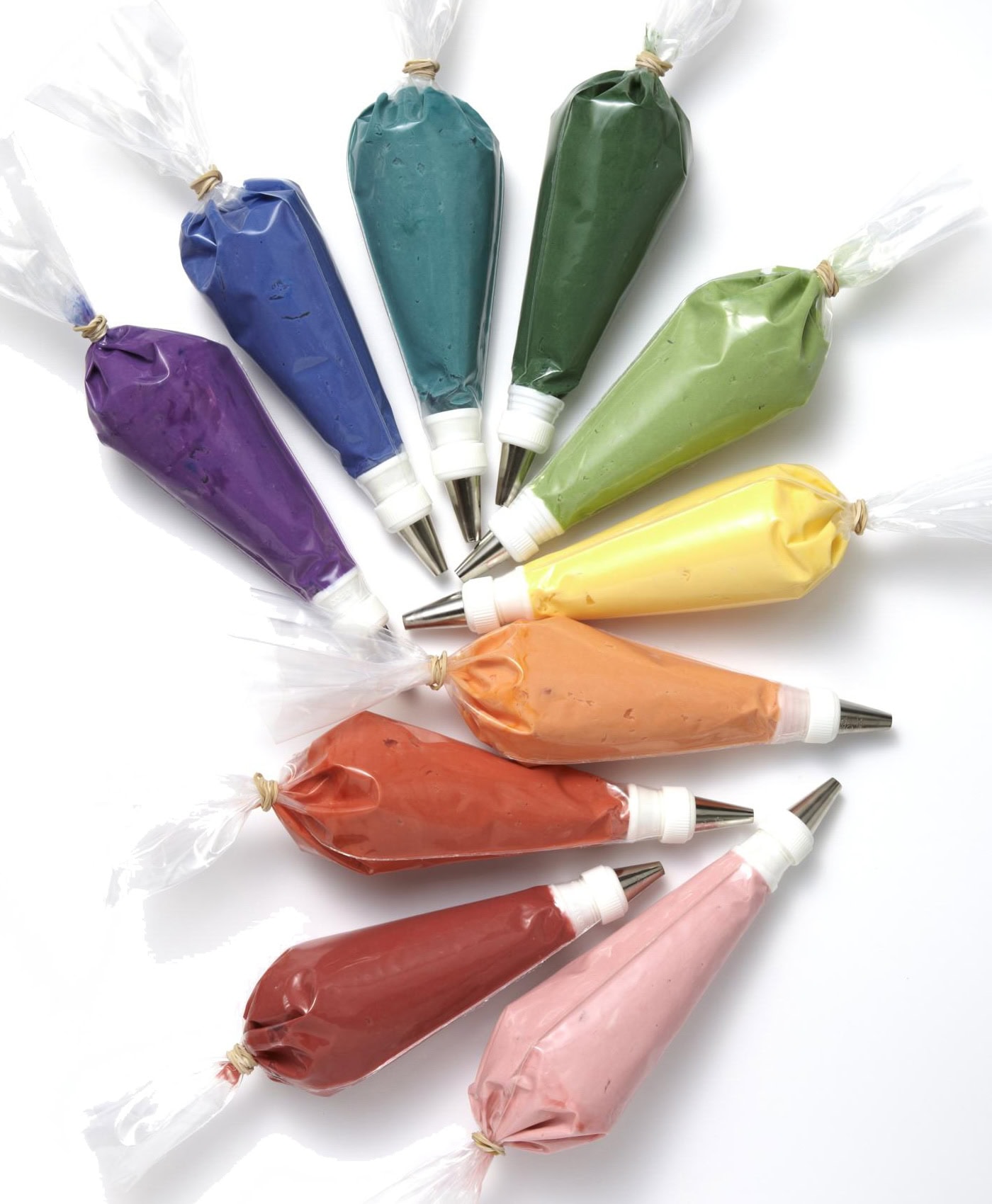
More reasons to love this luscious Swiss buttercream:
- Quick and easy: It only takes 4 ingredients and 30 minutes to make this versatile buttercream.
- Professional quality: This is THE recipe professional bakers use to frost cakes with smooth, crisp edges. It's delicious to swirl on cupcakes.
- Holds a shape: It's super easy to pipe beautiful shapes and designs, and holds very detailed shapes.
- Great flavor: Swiss meringue buttercream is sweet, but not too sweet. It's easy to flavor with baking extracts, or chocolate, and really highlights the other flavors in your baked goods.
- Silky texture: This frosting has the most dreamy, melt-in-your mouth texture. It's velvety smooth and light as air.
Jump to:
- Why you'll love this recipe
- What Is Swiss Meringue Buttercream?
- Ingredients
- How to make Swiss meringue buttercream
- Tara's expert tips
- How to color buttercream frosting
- Tara's coloring tips
- Recipes using Swiss meringue buttercream
- Equipment
- Storing and freezing instructions
- FAQ
- More frosting recipes to try
- 📖 Recipe
- 💬 Comments
What Is Swiss Meringue Buttercream?
Most people know traditional American buttercream as the very sweet frosting you make by combining confectioners' sugar and butter.
Unlike an American buttercream, the base of a Swiss meringue buttercream recipe does not use powdered sugar.
To make it, heat egg whites and granulated sugar over a double boiler using the Swiss meringue technique—this dissolves the sugar and makes the egg whites food-safe. Then whip the mixture into a fluffy meringue and gradually mix in softened butter. It's one of the most perfect frostings imaginable.
Simply put, it's a mouthwatering buttercream frosting that is silky smooth and not too sweet. It pipes and spreads like a dream, and can be colored with food coloring.
Italian vs Swiss Meringue Buttercream
Like its Swiss cousin, Italian meringue buttercream combines sweetened meringue and butter. However, you prepare the base of an Italian meringue using a slightly different cooking method.
For Italian meringue, cook sugar and water together to a specific temperature stage on a candy thermometer. Then drizzle the hot syrup into whipping egg whites to form a fluffy meringue. Once whipped, gradually mix in softened butter to create a creamy, not-too-sweet buttercream.
The finished frosting will be stiffer and slightly more stable than Swiss meringue buttercream.
You can enjoy both Swiss and Italian meringues (without the butter) straight from the bowl or bake them slowly to make crisp meringue desserts.
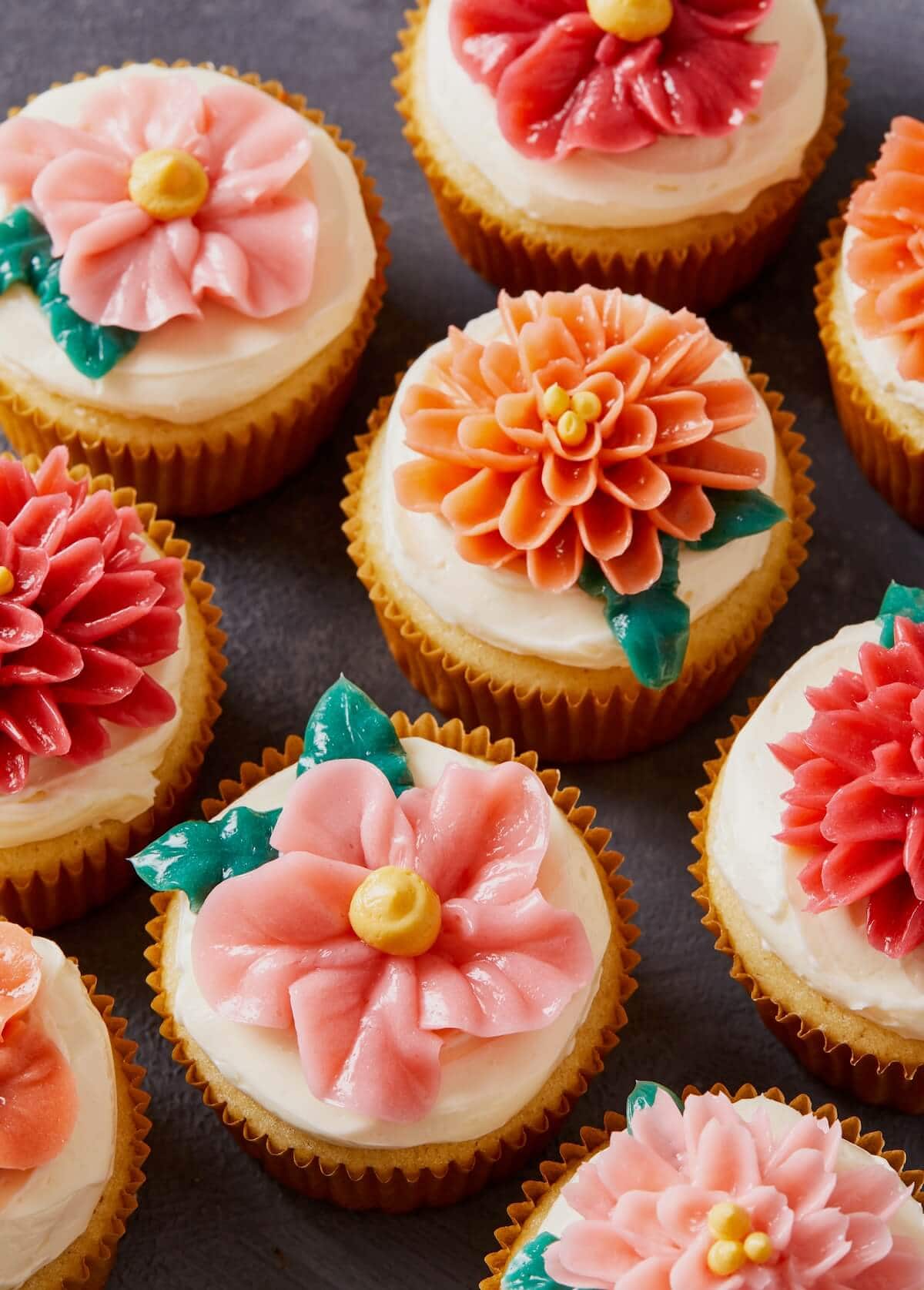
This frosting is so smooth and the perfect sweetness. It really is easy to work with and is great for piping cupcakes. My go-to recipe!!
- Marie

Ingredients
Check out these ingredient tips as you gather everything you'll need. See recipe card for quantities.
- Egg whites: The Swiss meringue frosting starts with — you guessed it! — egg whites. Use the whites from large eggs (not medium or extra large) for the base of the buttercream.
- Granulated sugar: The second half of the meringue! You'll need granulated sugar for sweetness. It also has a stabilizing effect on the egg whites.
- Unsalted butter: Mix pure, sweet, unsalted butter into the meringue to create a melt-in-your-mouth texture with a balanced flavor—not too sweet or salty. Let the butter come close to room temperature before adding it to the frosting.
- Vanilla extract: For added flavor, I always mix pure vanilla extract into my Swiss meringue buttercream frosting. You could also flavor it with almond, lemon, or any other flavoring you enjoy.
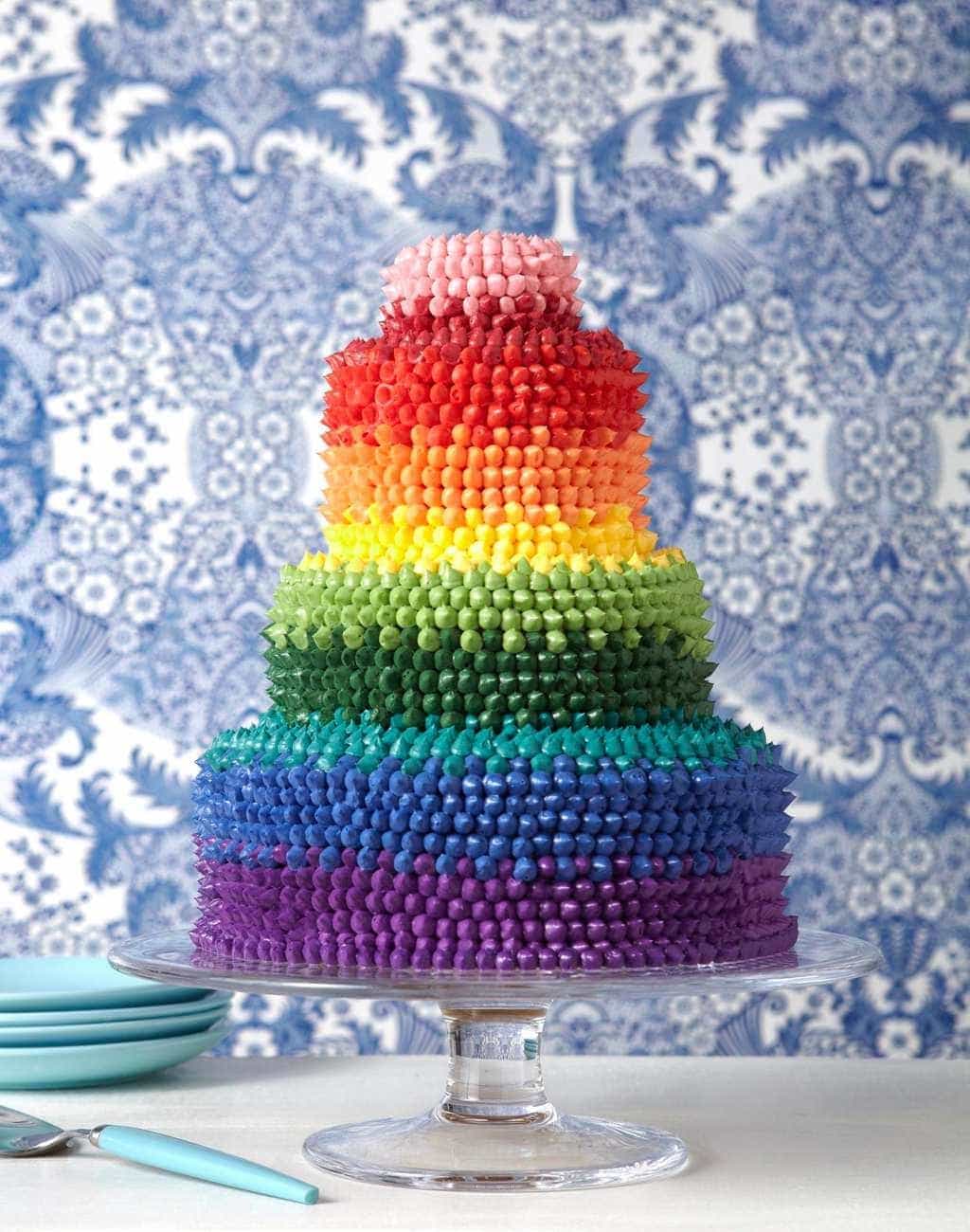
How to make Swiss meringue buttercream
Below is an overview of how to make a Swiss meringue buttercream recipe. See the recipe card below for the full instructions.
- Prepare ingredients: Soften butter, then bring a saucepan of water to a boil over medium-high heat; reduce to a simmer. Combine 5 large egg whites and 1¼ cups sugar in a heatproof bowl.
- Place bowl over saucepan: Set the bowl over the pan of simmering water and whisk constantly.
- Whisk: Whisk continuously until the sugar dissolves and no crystals remain, about 5 minutes. Remove from heat.
- Whip to stiff peaks: Use a mixer fitted with a whisk attachment to whip the sugar mixture on high until it is cool and has formed stiff peaks, 10 to 12 minutes.
- Beat in butter: Reduce speed to medium-high and begin beating in 4 sticks (2 cups) softened butter, a little at a time.
- Add flavoring: The buttercream will look a little curdled after adding the butter. Turn mixer to low, add 1 teaspoon vanilla extract, and resume mixing.
- Continue mixing until creamy: Mix slowly to release air bubbles and fully incorporate the butter, 3 to 5 minutes. It should look smooth and creamy. Use immediately or refrigerate.
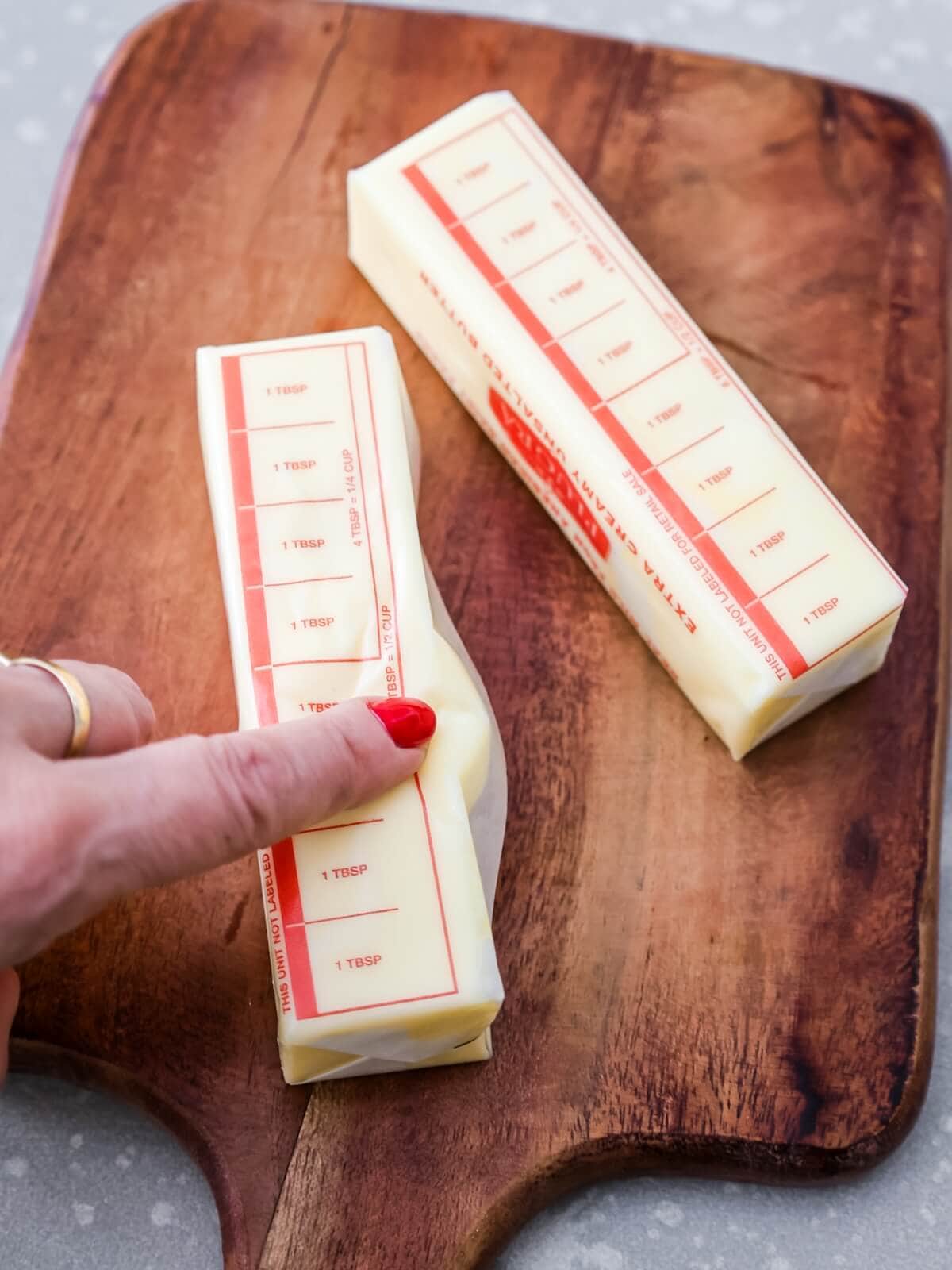
- Step 1: Make sure your butter is softened but not warm. It should give a bit but still hold a shape when touched.
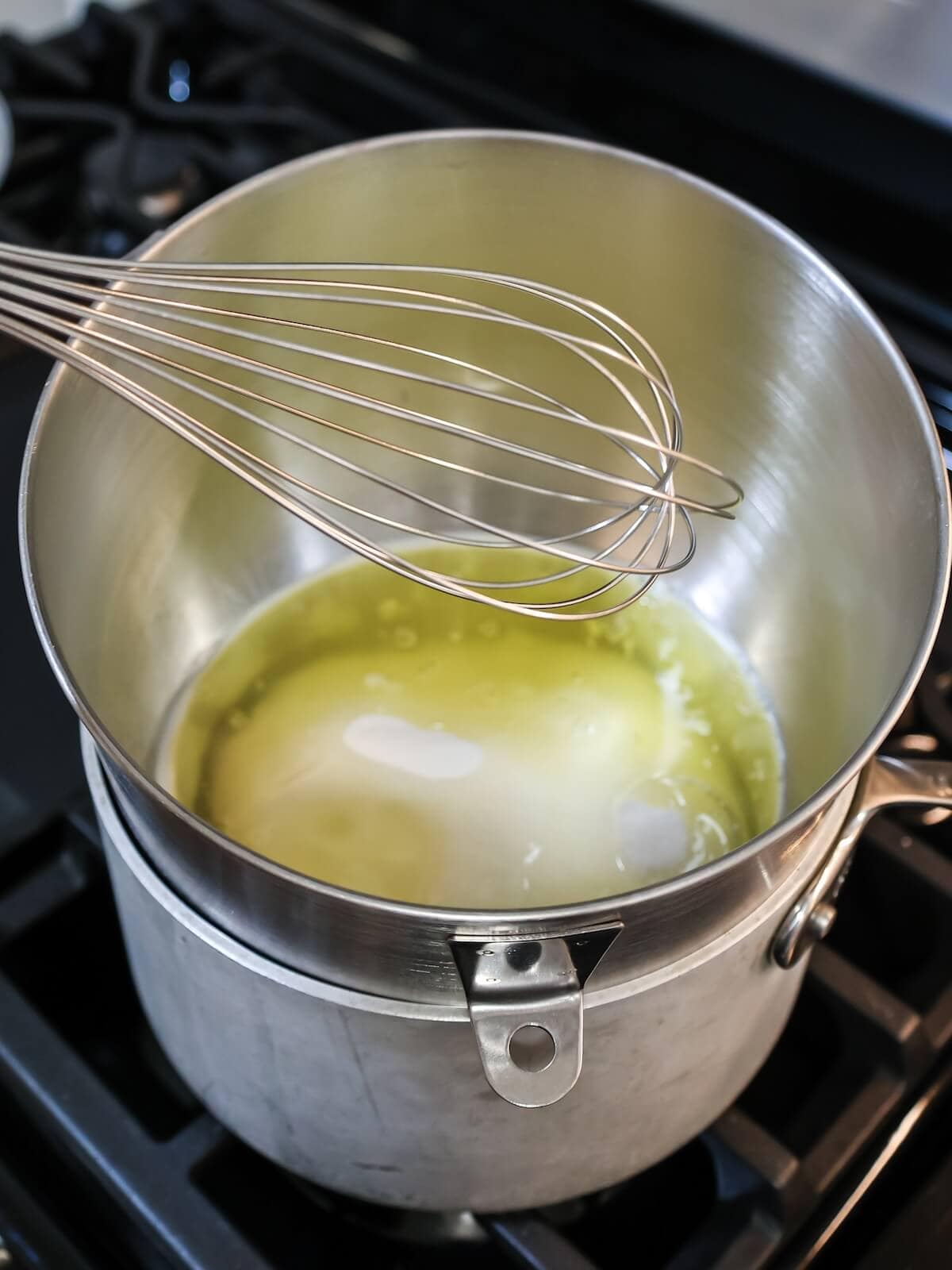
- Step 2: Fill a pot with about 1 inch of water to boil, and place a metal mixing bowl on top. Whisk together egg whites and sugar.
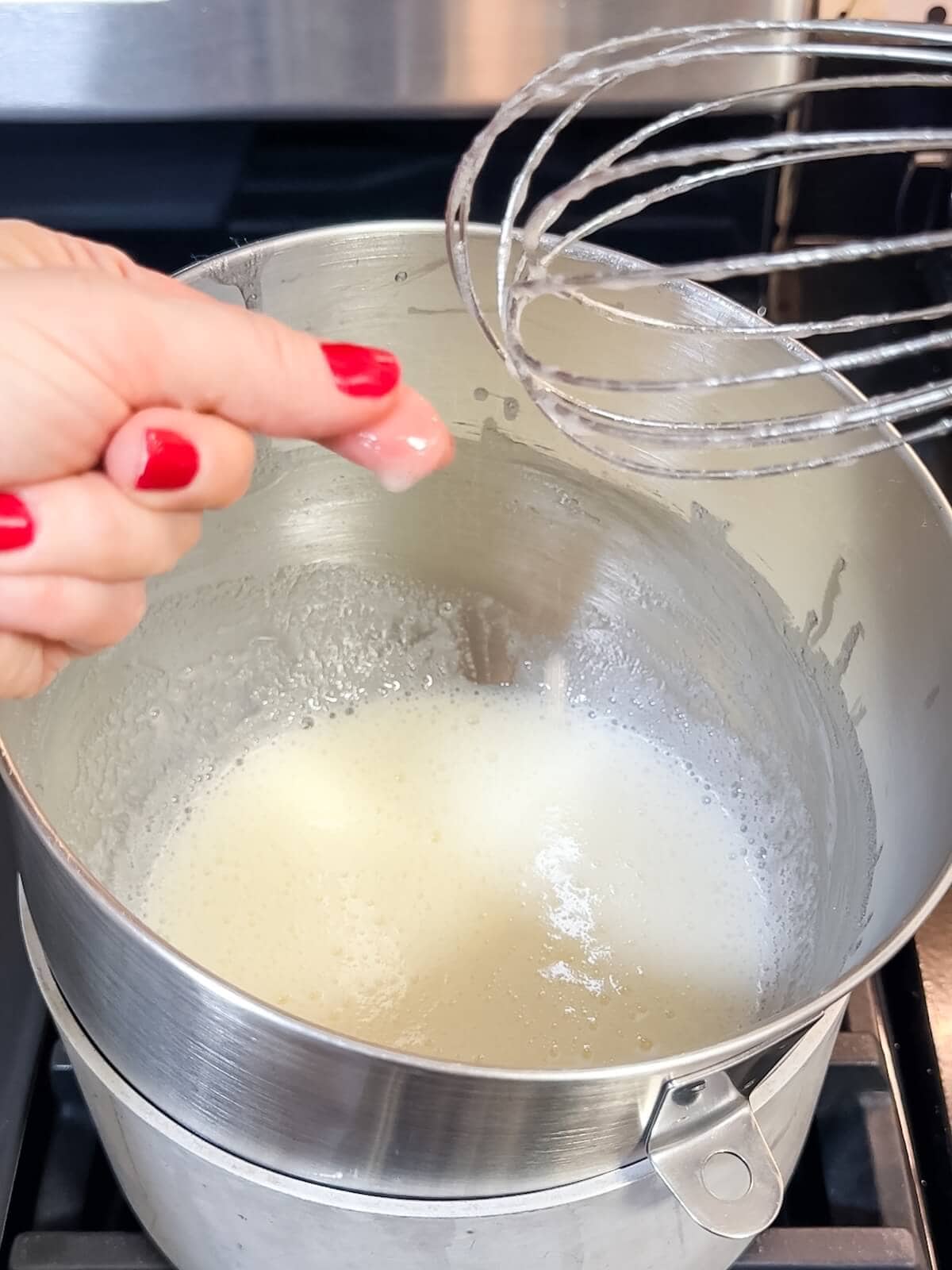
- Step 3: When mixture is hot (165ºF) and sugar is dissolved, remove it from the heat. Check by rubbing mixture between fingers to check for sugar crystals.
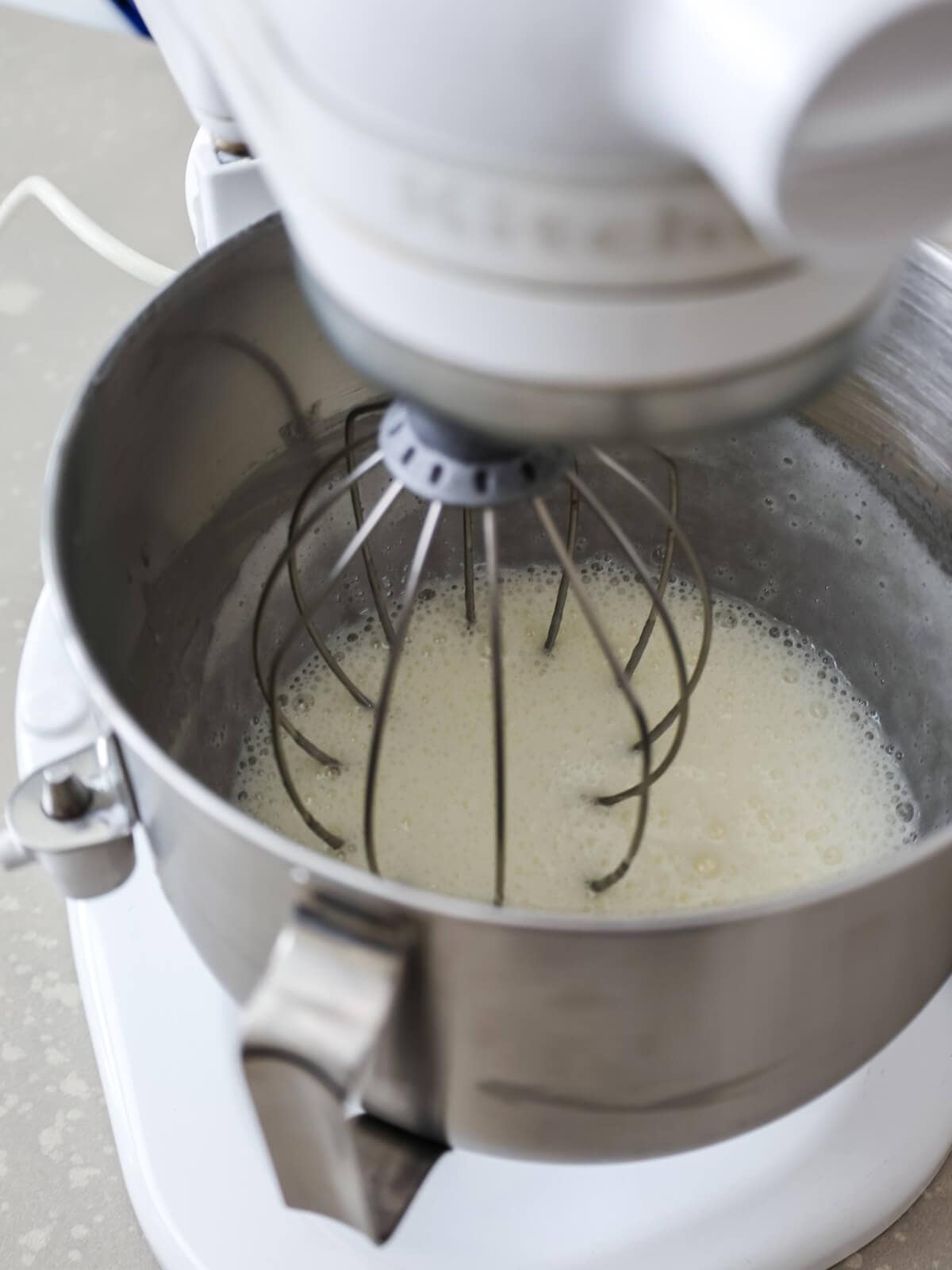
- Step 4: Whip mixture until it has cooled and formed a stiff meringue. Stop to scrape the sides of the bowl occasionally.

- Step 5: The meringue should be firm and fluffy before adding the butter.
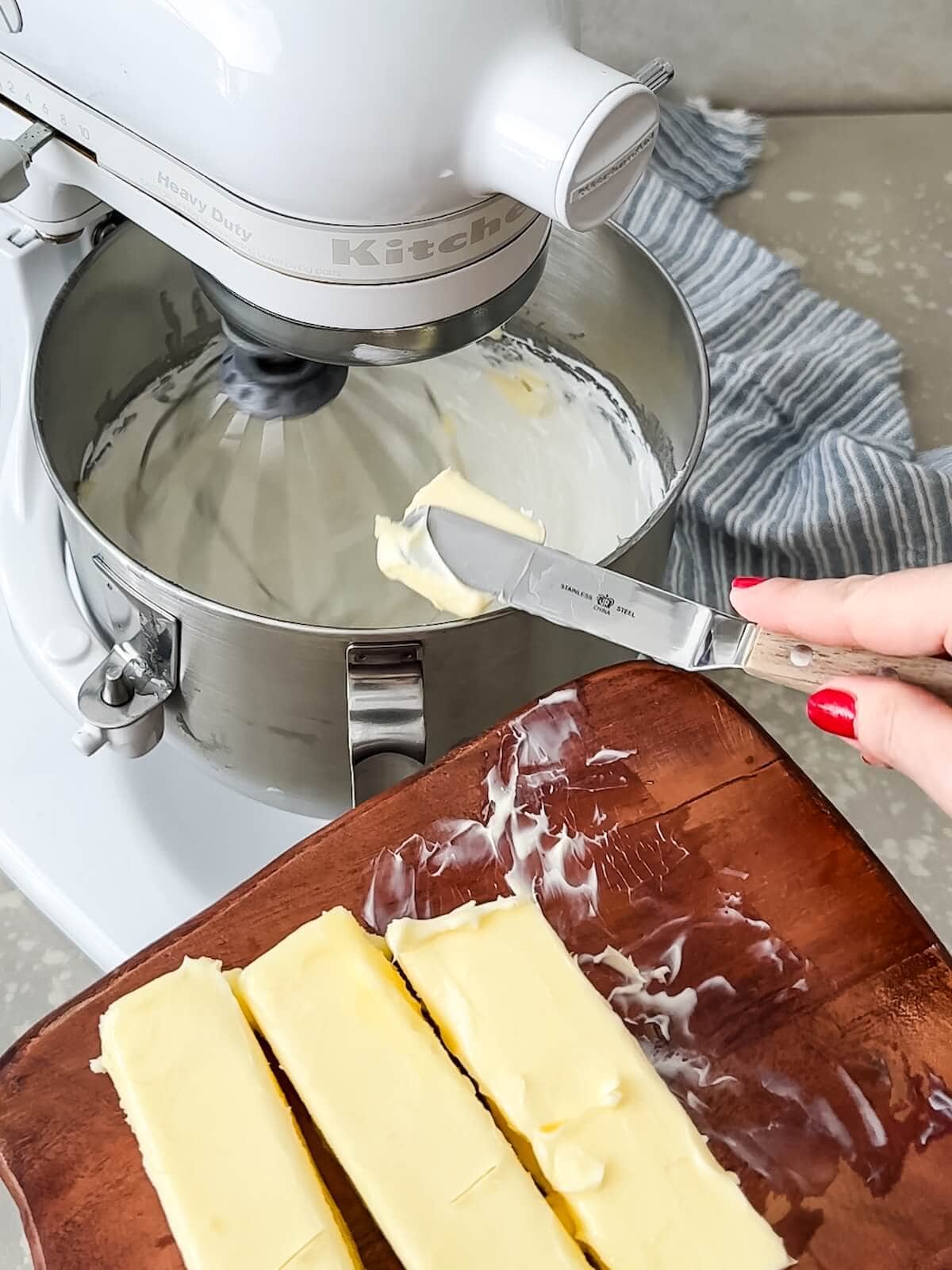
- Step 6: Add butter a few tablespoons at a time, letting it whip into the meringue for a few seconds with each addition.
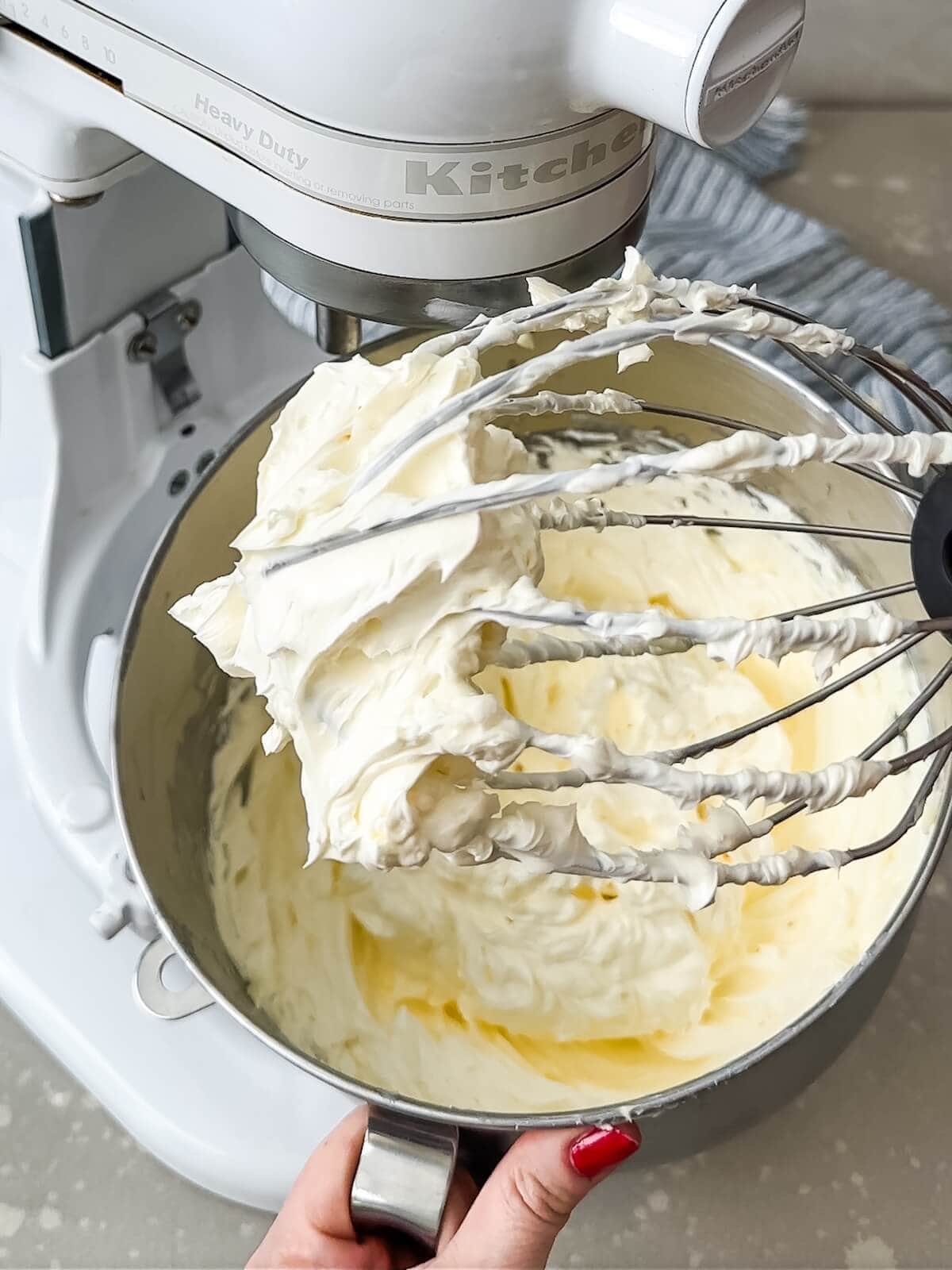
- Step 7: If the buttercream curdles that's ok—keep whipping until it comes together and is smooth.
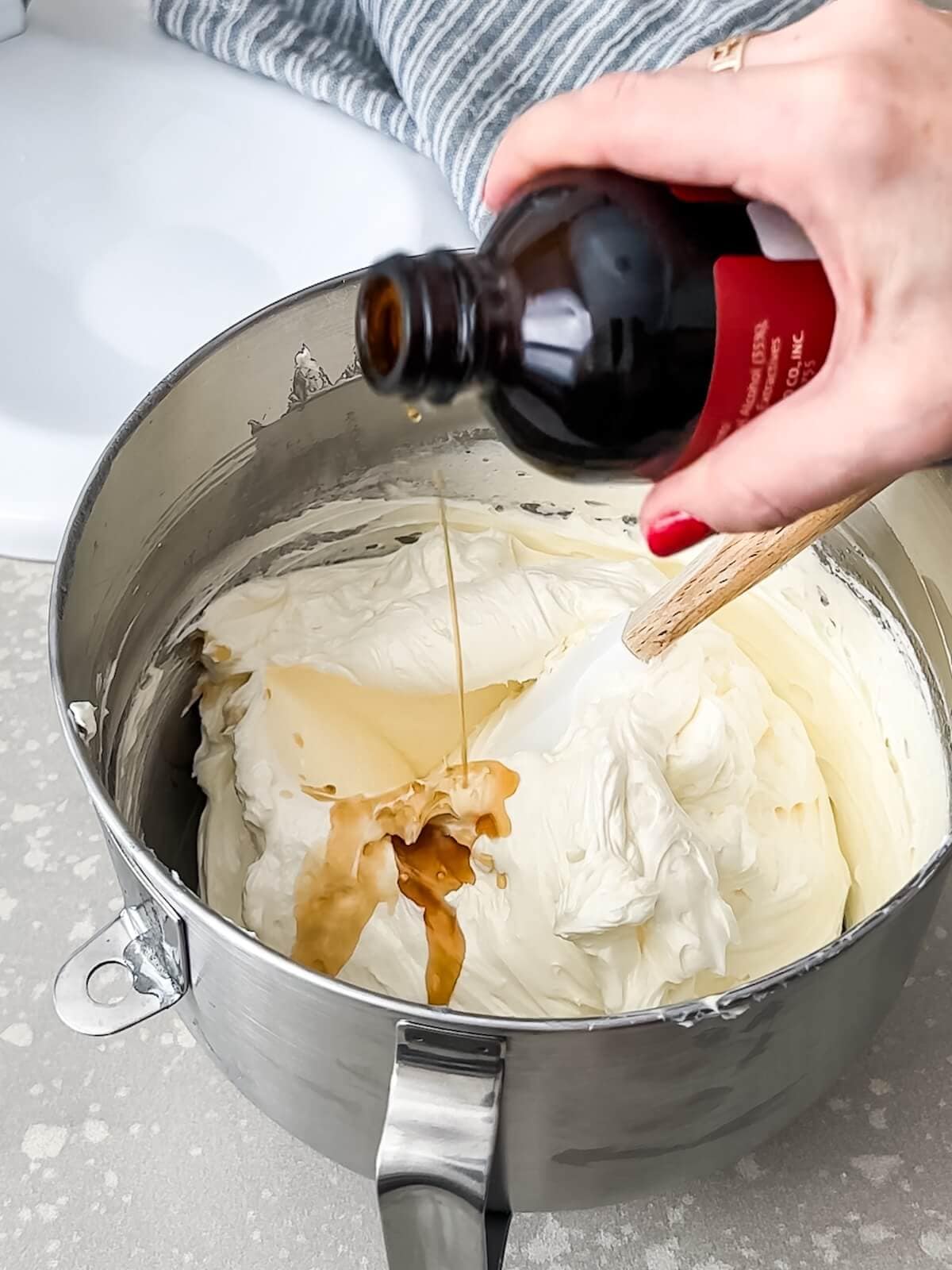
- Step 8: On the mixer or off, stir in the vanilla extract and food coloring. Or place in portions and color separately.
Tara's expert tips
Want to make the perfect Swiss meringue buttercream recipe? Take a peek at these expert tips to avoid common mistakes.
- Check for sugar crystals: When making the meringue, it's important for the sugar to fully dissolve into the egg whites. You can test the mixture for remaining sugar crystals by rubbing a small amount between your fingers--it should feel smooth without any grittiness. Keep heating and whisking the meringue until it feels right before proceeding with the rest of the recipe.
- Whip to stiff peaks: When whipping the meringue, it will go through a series of phases. You're looking for a phase called stiff/firm peaks where the mixture has thickened sufficiently to hold its shape. You can test the meringue by lifting the whisk out of the mixture. Look into the bowl where the whisk was and watch for how the meringue reacts. As it thickens, the mixture should pull upward toward the whisk. The tops of these peaks may curl over (soft peaks) or stick upward (firm peaks). Keep whipping until the you get stiff peaks that point upward.
- Use softened butter: Swiss buttercream should be smooth and creamy. Using softened butter will make the mixing process painless and helps to prevent lumps. To soften butter, allow it to sit on the counter for approximately 30 minutes. You'll know it is ready to use when you can press the outside wrapping gently with your thumb and leave a slight indent.
- Keep whipping: As you whip the buttercream, it goes through several stages. You’ll notice it looks lumpy and curdled during the mixing process—but don’t worry, that’s totally normal! Just keep whipping on medium or low speed. The gentle mixing brings everything together into a smooth, creamy frosting.
- Room temperature is best: Although refrigeration is best for storage, Swiss meringue buttercream is easiest to use and tastiest to eat at room temperature. Let it sit for a bit and allow desserts to come to room temperature before serving.

How to color buttercream frosting
To get those gorgeous, deep shades, it's important to follow a couple of food coloring guidelines.
- Food coloring: Add food coloring once you’ve fully combined the buttercream—mixing it in at the end helps the color set evenly.
- Don't use traditional liquid food coloring: Mixing liquid food coloring into your frosting will likely ruin it. To get nice shades, you'll have to add so much liquid food coloring that the buttercream will get runny.
- Use gel paste food coloring: Gel coloring is my favorite; it's super intense and doesn’t add excess liquid to the frosting. You’ll notice that with intense colors like red and black, or deep colors like blue and dark green, you’ll still need to add a lot of gel coloring. Thankfully, the gel won't ruin the consistency of the frosting.
- Plan ahead: You can expect the color of your frosting to almost double in intensity after sitting at room temperature for about 24 hours. I recommend making and coloring your frosting a day in advance of your baking project so that the coloring has time to set and deepen.
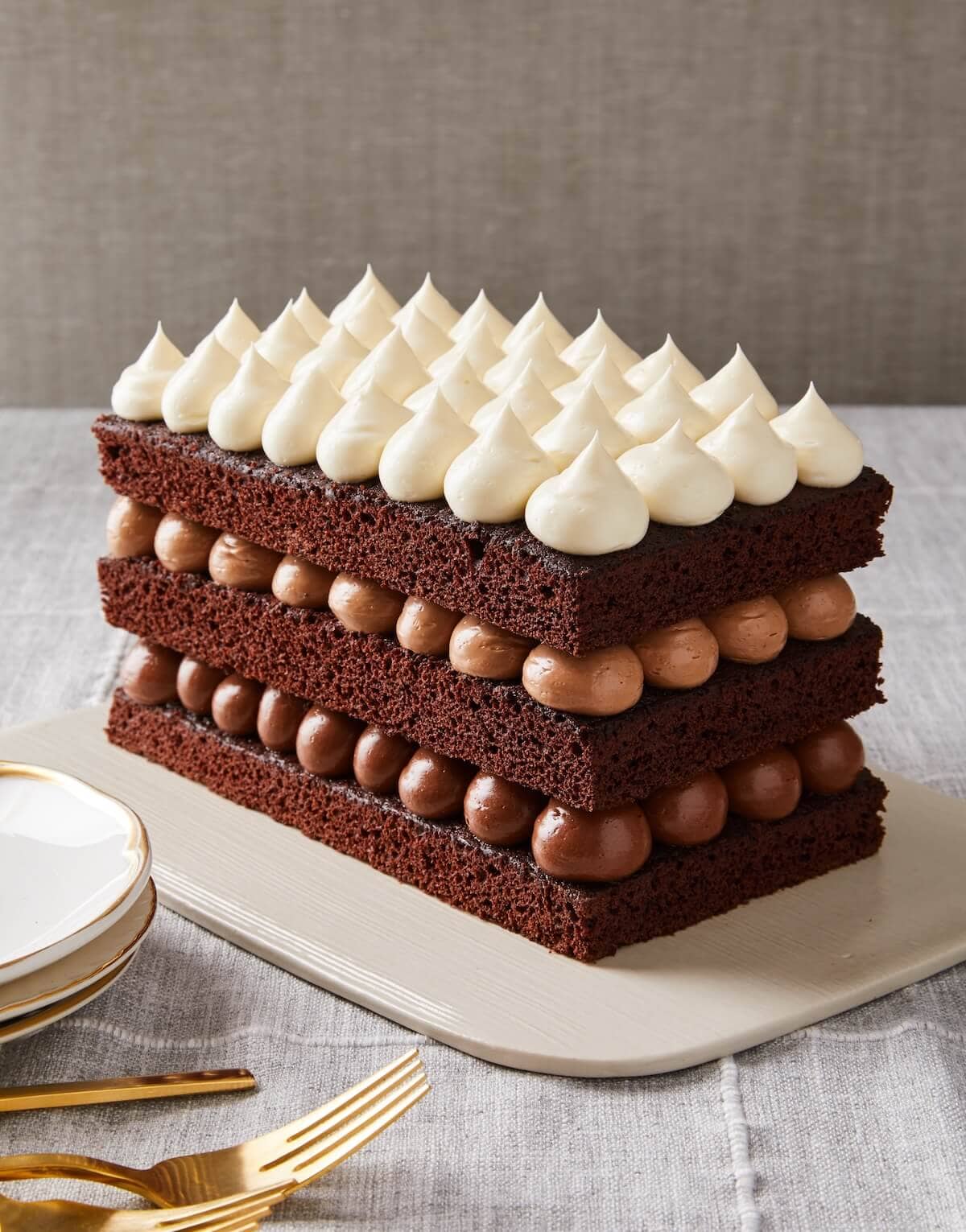
Tara's coloring tips
Swiss meringue buttercream doesn't color the same as American buttercream. Here are a few things I've learned over the years.
- Color an intense base color first: I color about ¼ cup of buttercream in a small bowl, using gel coloring. It acts as a concentrate, so I make it very intense. Then I can add a little at a time to a bigger portion of buttercream knowing I won't ruin the whole batch with the wrong color!
- Dark colors need heat: As mentioned above, dark colors are harder to achieve with this buttercream. I melt, yes melt! a few tablespoons of buttercream in a bowl and add the rich colors. The melted base is even more concentrated than the base color described above. You can stir the melted buttercream into non-melted buttercream to intensify the color.
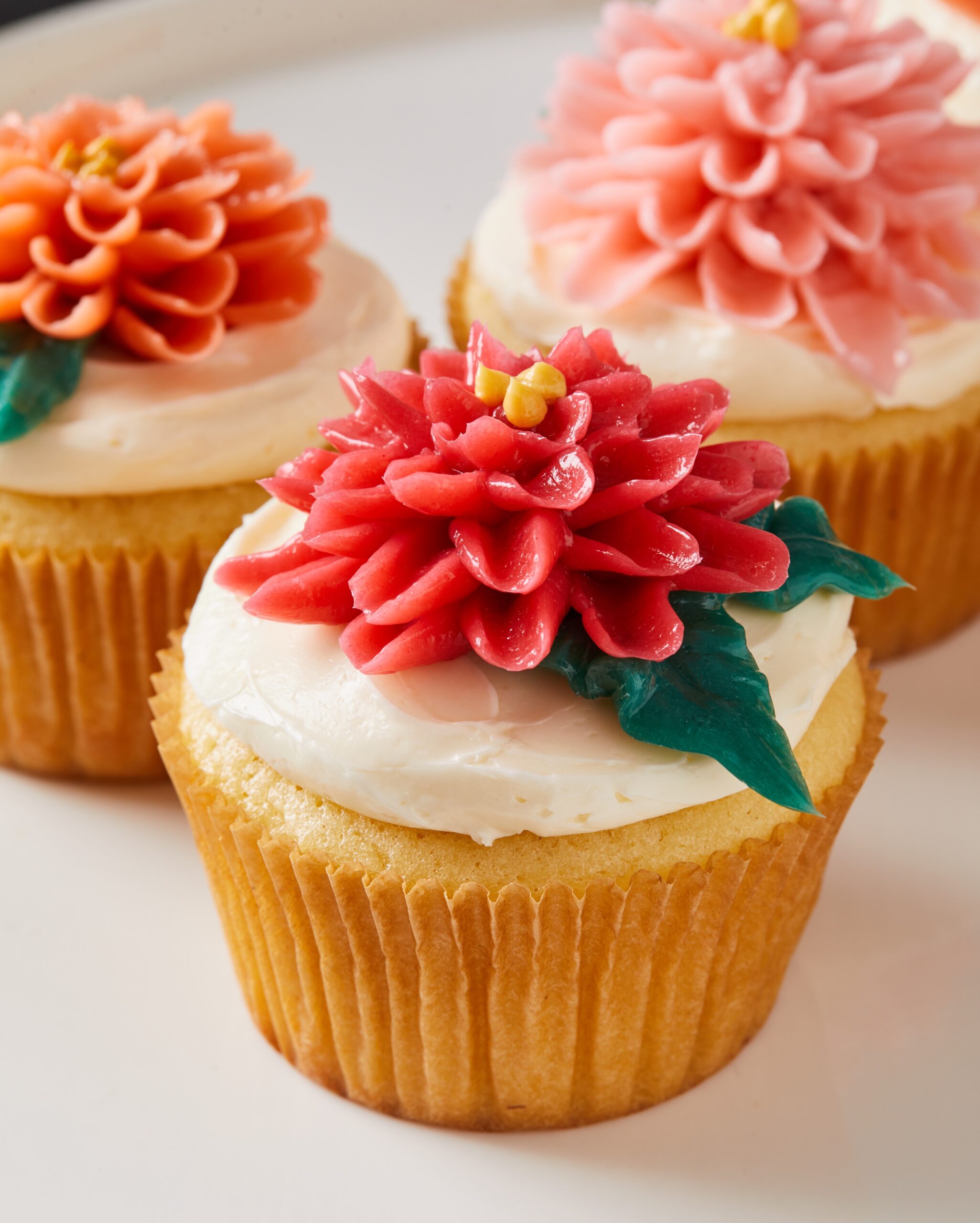
Recipes using Swiss meringue buttercream
I would make what seemed like vats of this when I worked at Martha Stewart magazine! I used it on cupcakes, holiday and spring cakes, and all the cute decorated kids' cupcakes in the Kids magazine. Here are a few ideas for how you can use this recipe at home:
- Swirl: It's really lovely swirled in bright colors on top of delicious cupcakes like these Vanilla Birthday Cupcakes.
- Pipe: It's also amazing for piping beautiful designs like the flowers on my Spring Flower Cupcakes! If you are new to piping buttercream, you'll want to get a standard set of piping tips, and disposable piping bags for easy cleanup!
- Color: You'll notice that Swiss meringue buttercream tints easily with highly-concentrated gel paste food coloring, allowing you to make gorgeous shades of colored frosting that really shine. Check out my Party Rainbow Cake to see what I mean!

Equipment
You won't need a lot of fancy kitchen tools to make a bakery-style Swiss meringue buttercream recipe. Here's what I'd recommend having on hand:
Storing and freezing instructions
Keep your buttercream nice and fresh with proper storage!
- Room temperature: Cover freshly made buttercream and keep it at room temperature for up to 24 hours, or refrigerate it right away.
- Refrigerate: After 24 hours, transfer your buttercream to the fridge—it will stay fresh, covered, for up to two weeks.
- Re-whip: After sitting at room temperature or in the refrigerator, air bubbles will begin to form. To restore the buttercream to it's satiny texture, you'll want to re-whip it on low speed until smooth again.
- Freeze: Place Swiss meringue buttercream in a freezer-safe container and store it in the freezer for up to 3 months.Thaw refrigerated buttercream at room temperature before using. Then gently whip it at low speed to get it smooth and ready to use.
- Quick-thaw: When I’m in a hurry, I don’t always have time to wait for frozen buttercream to thaw on the counter. To quick-thaw the frosting, zap it in the microwave for a few seconds at a time, until it's soft enough to put in a mixer, but don't melt it! Then re-whip as directed above with the mixer on low speed until all the cold lumps have thawed and smooth out.
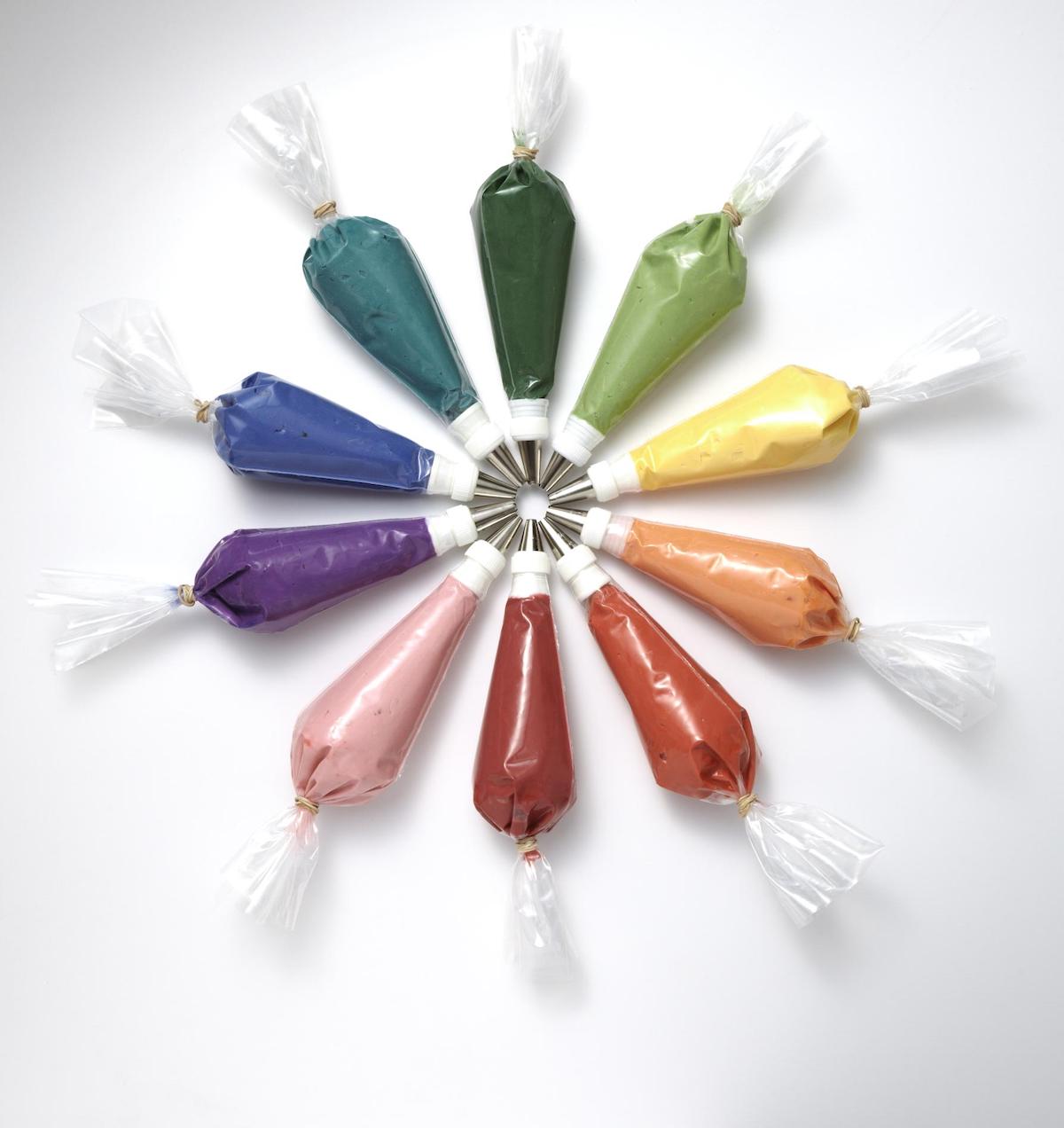
FAQ
There really aren't a lot of downsides to using Swiss buttercream! It doesn’t work well for frosting cookies you plan to stack. Swiss meringue buttercream will not form a hard outer crust and will stick to other cookies if stacked one on top of the other.
Professional bakers use all kinds of frosting recipes depending on the desserts they are making.
For example, they might use a royal icing for designing flooded sugar cookies or an American buttercream for stackable cookies, bars, and brownies.
Cream cheese frosting is a go-to for desserts like red velvet and carrot cake, and icing makes an excellent topping for Bundt cakes and coffee cakes.
Bakers often use Swiss meringue and Italian meringue buttercream for cake decorating and piping intricate details.
Yes, it will firm up in the fridge, but it doesn't form a hard crust on the outside the way that American Buttercream does. For the best taste and texture, serve baked goods topped with Swiss meringue buttercream at room temperature so that the frosting is soft and creamy.
The egg whites and sugar mixture is food-safe and free from harmful bacteria at 160ºF. You can check the mixture with a thermometer to be sure. When I do the touch test—rubbing the mixture between my fingers to check for sugar crystals—I usually find that the sugar has dissolved right as the temperature hits around 160ºF.
Rate this recipe! ⭐⭐⭐⭐⭐
Scroll to the bottom of the page to rate and comment on this recipe. Leaving comments, questions, and ratings helps other too!
📖 Recipe
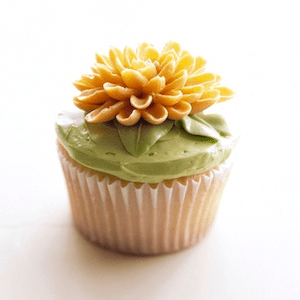
Swiss Meringue Buttercream Recipe
Ingredients
- 5 large egg whites
- 1¼ cups granulated sugar
- 4 sticks (2 cups) unsalted butter (softened)
- 1 teaspoon vanilla extract (or other flavoring extract)
Instructions
- Place a saucepan of water on the stove over high heat and bring to a boil. Reduce heat and let water simmer.
- Whisk together 5 large egg whites and 1¼ cups sugar in a heatproof electric mixer bowl. Place the bowl over the pan of simmering water and whisk until sugar dissolves completely, about 5 minutes. Test for doneness by rubbing the mixture between your fingers--you shouldn't feel any sugar crystals.
- Remove mixer bowl from heat and transfer to the mixer stand fitted with the whisk attachment. Beat on high speed until mixture cools and stiff peaks form, 10 to 12 minutes.
- Reduce speed to medium-high and begin adding unsalted, softened butter a little at a time until just incorporated.
- Turn mixer down to low speed, add vanilla extract, and continue mixing until smooth. Buttercream may curdle but will smooth out as you continue to beat it.
- Use immediately, or cover and refrigerate for up to 2 weeks. Can also be frozen in a freezer-safe container for up to 3 months. Before using, bring to room temperature and beat on low until smooth.
Notes
Nutrition
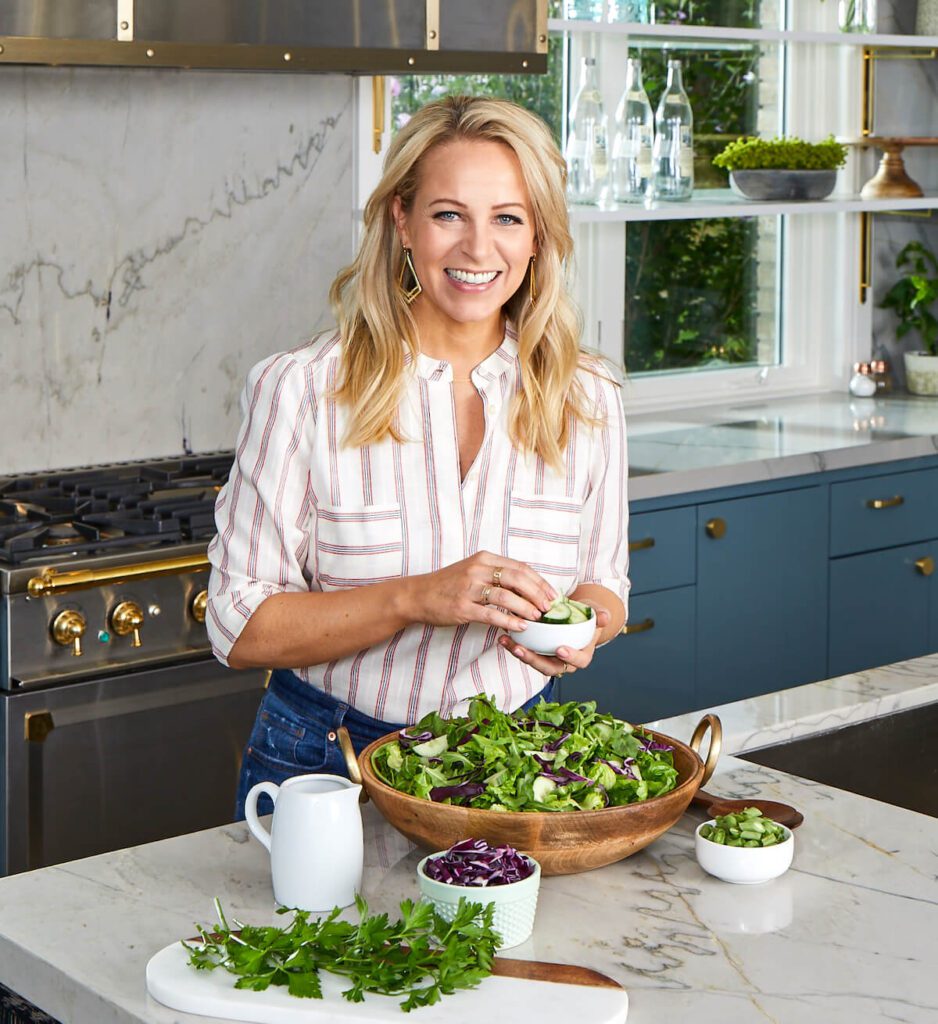
Tara Teaspoon
I’ve been in food publishing for over 25 years, creating recipes & food-styling for magazines, books, television, food brands, & advertising. With two cookbooks under my belt and thousands of my recipes at your fingertips, I hope you'll be inspired to spend more time in the kitchen!

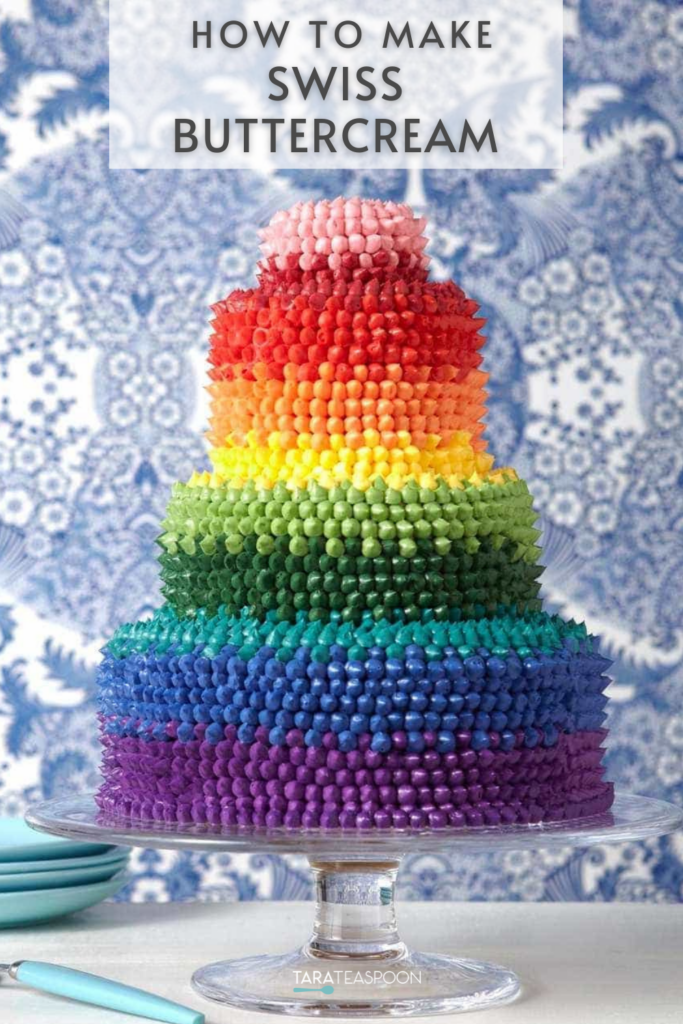
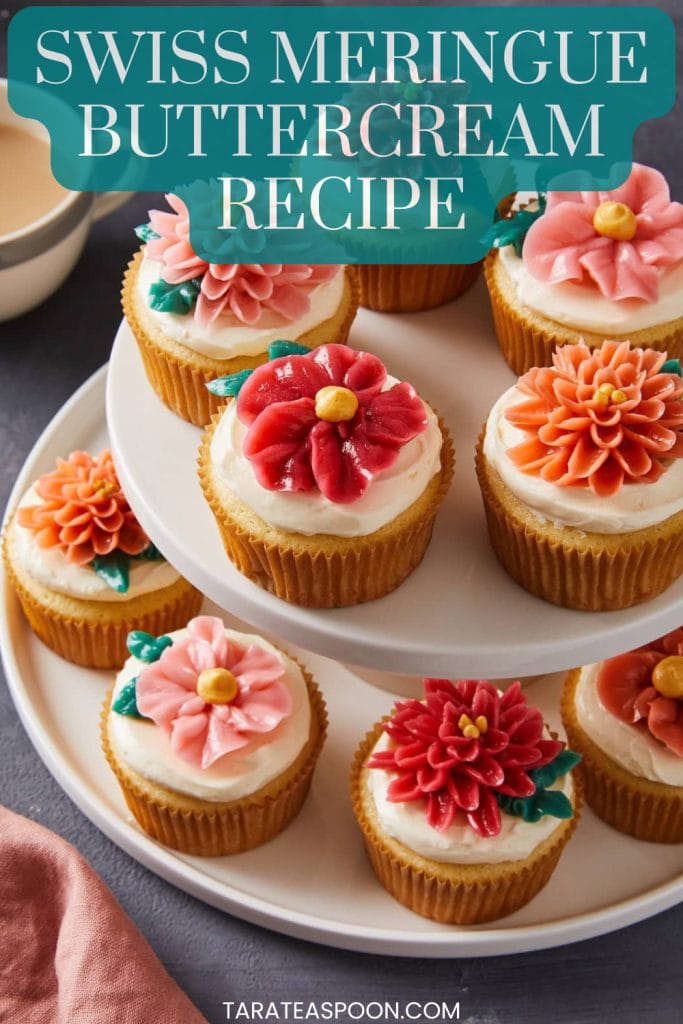
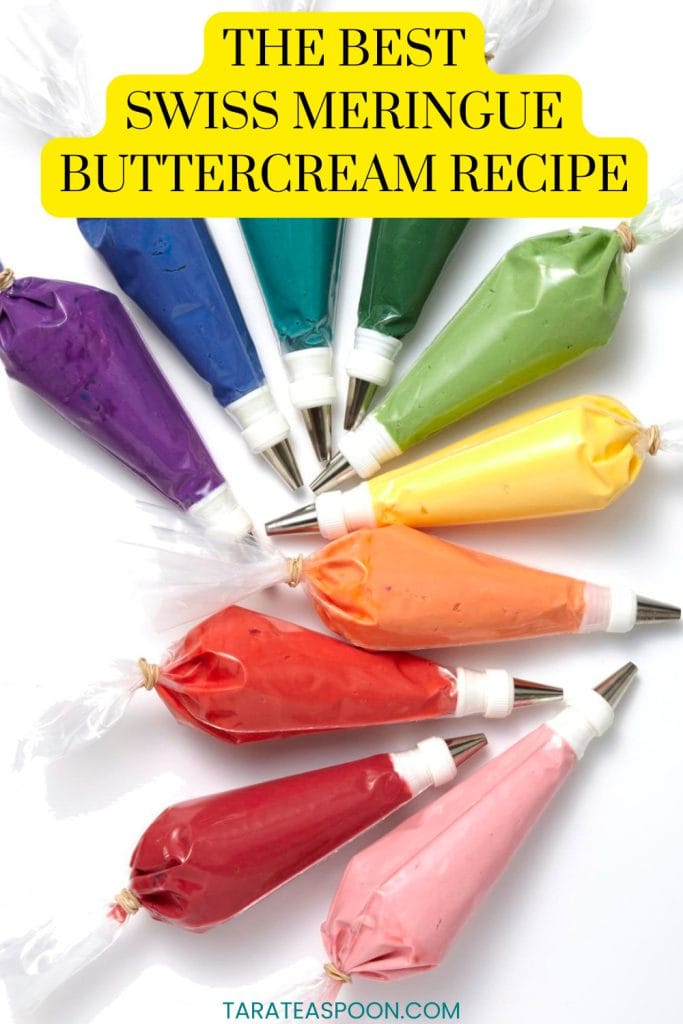
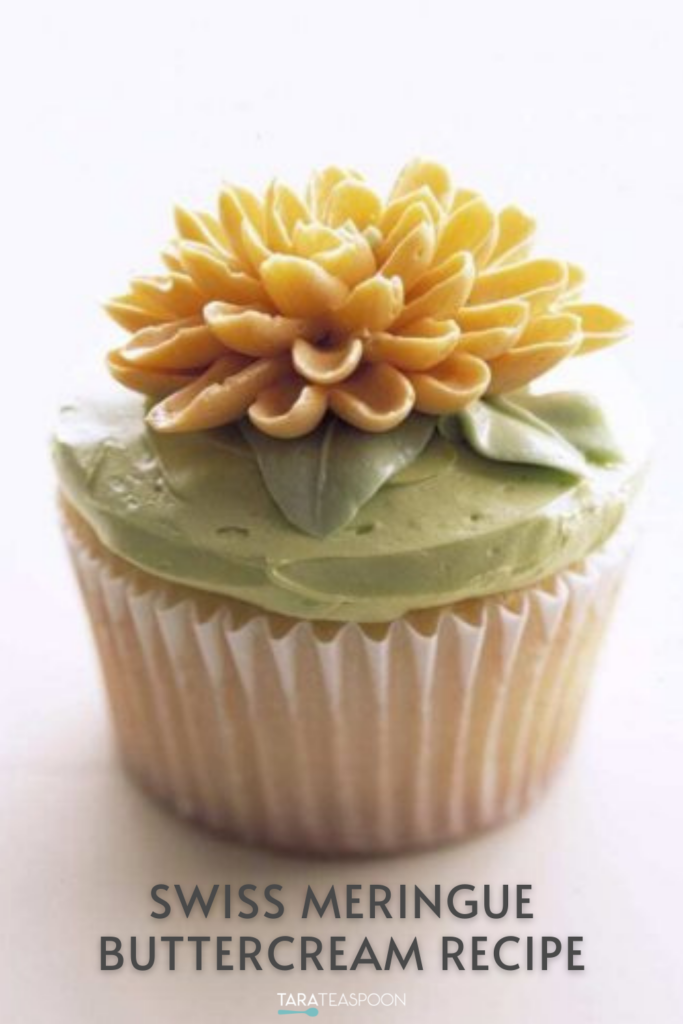
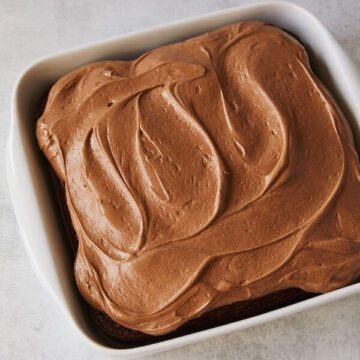
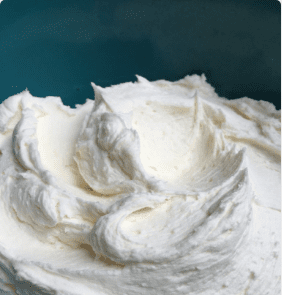
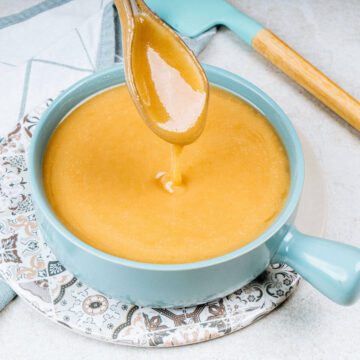
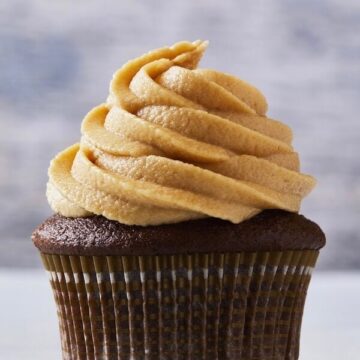
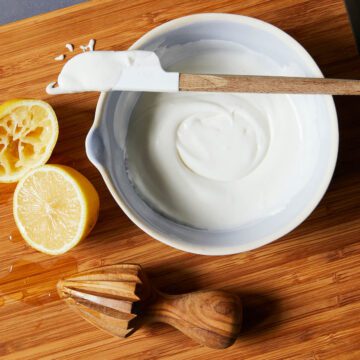
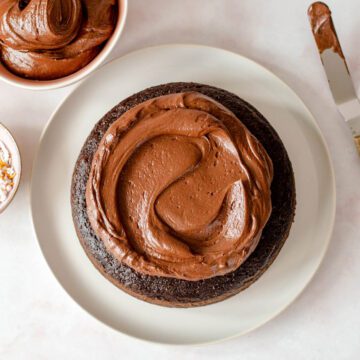
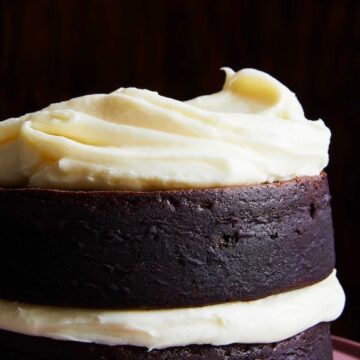
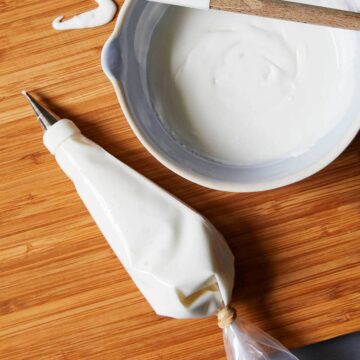
Mary Bench says
This buttercream is glorious!
Brittany Smart says
Yum! Great recipe
Amanda J says
Could you use meringue powder instead of eggs?
Ruby Neff says
I love how smooth this frosting is!
Marie says
This frosting is so smooth and the perfect sweetness. It really is easy to work with and is great for piping cupcakes. My go to recipe!
Becci says
Can you add any guidance for color? When to add food coloring and if there are certain kinds that work better than others?
Tara says
Hi Becci! I mention gel paste food coloring (like Americolor) in the post. It's my favorite. It's intense and doesn't add liquid to a frosting. I add food coloring once my frosting is finished being made. You'll notice with colors like red, or black, deep colors like blue or dark green, that you'll need a massive amount of coloring. Do plan ahead! The colors intensify quite a bit in the frosting if left at room temperature for a day. The rainbow colors you see in the images were left overnight, then re-stirred and placed in the piping bags. The color almost doubles in intensity.
Michelle says
I plan to use this to make some flowers today but I am wondering if I can use monk fruit sugar replacement 1=1?
Tara Teaspoon says
Hi Michelle,
I haven't ever used monk fruit sugar in this recipe but my familiarity with it would suggest it's not a good substitute.
I think you need the chemical makeup of sugar to create the meringue. That being said, you could try a 1/2 or 1/4 of a batch to test it.
That way you can see if you like the flavor as well.
Tara